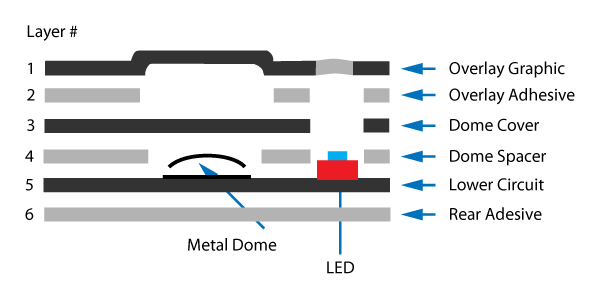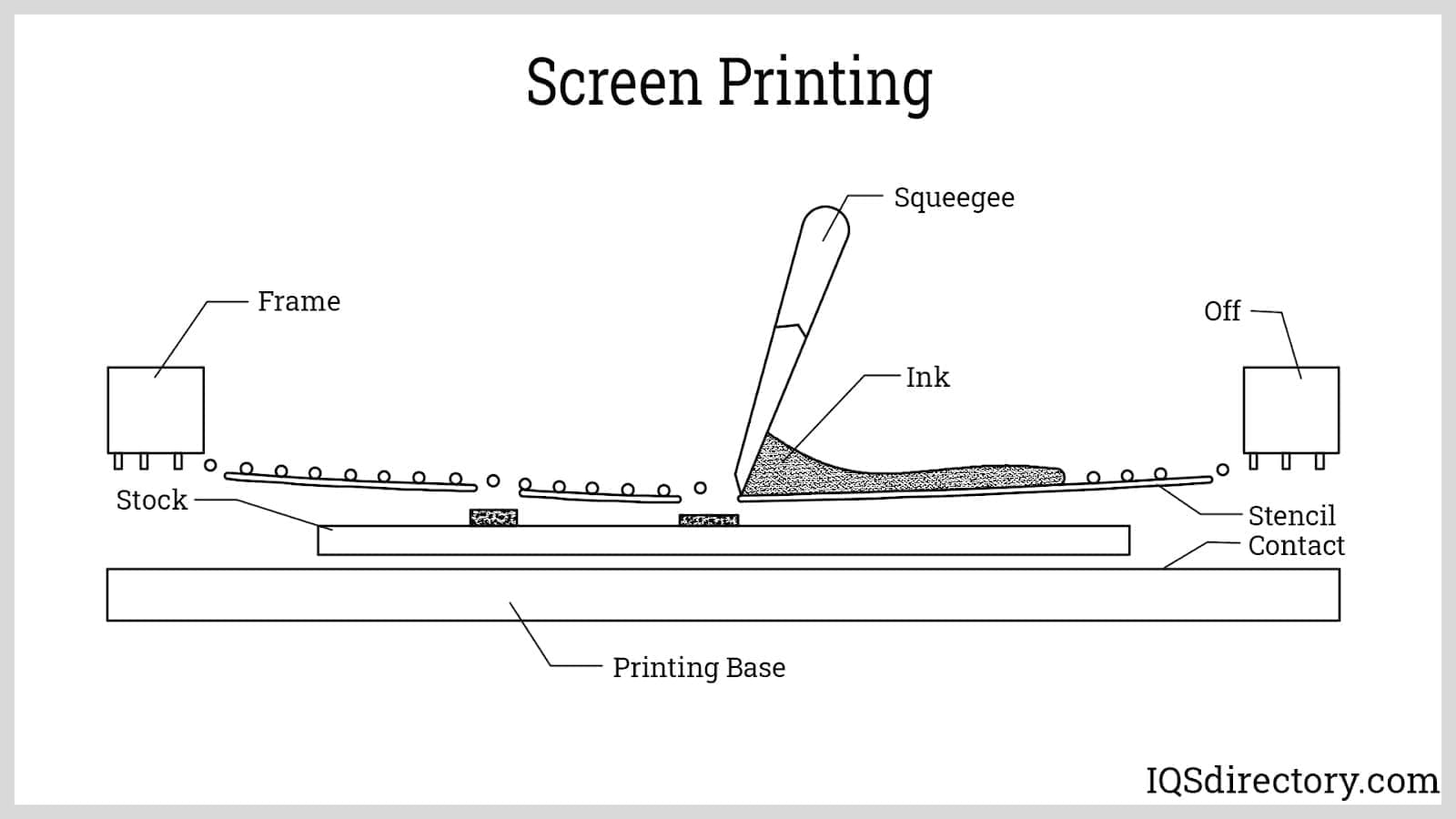The Manufacturing Refine Behind Membrane Switch Over: What You Need to Know
The production process behind membrane switches combines mindful design, product choice, and quality assurance. It starts with recognizing the details of membrane button style and progresses via numerous stages, including material selections and printing techniques. Each phase plays a necessary duty in making certain functionality and toughness. The complexities of layer building and the extensive screening standards might reveal understandings that are not right away noticeable. What lies beyond these foundational aspects?
Comprehending Membrane Layer Switch Over Design
Membrane switches may appear simple at very first glimpse, their layout involves elaborate considerations that ensure performance and longevity. The design process begins with a complete understanding of user requirements, including the user interface's desired application and ecological variables. Ergonomics is a crucial element, as the design should assist in simplicity of use while guaranteeing that tactile feedback fulfills user expectations.Moreover, the layering of components, such as visuals overlays, glue layers, and conductive traces, need to be exactly engineered. membrane switch. This layered arrangement not only affects the button's responsiveness yet likewise impacts its longevity. Focus is offered to the securing methods utilized to safeguard against dampness and dirt, which could endanger efficiency. Furthermore, design considerations reach aesthetics, where shade plans and visual quality improve user experience. Inevitably, the layout of membrane switches equilibriums functionality, customer experience, and toughness, guaranteeing that they meet the needs of different applications efficiently
Products Utilized in Membrane Layer Change Manufacturing
When picking products for membrane layer switch production, it is important to ponder both performance and longevity. The main products consist of polyester and polycarbonate films, which supply flexibility and toughness. These films are commonly coated with sticky to assure correct bonding to substratums. Conductive inks, usually composed of silver or carbon, are critical for developing electric links within the button, permitting dependable operation.Additionally, a safety layer, such as a tough coat, is frequently used to boost scrape resistance and long life. The choice of backing product, such as acrylic or foam, can substantially influence the switch's responsive feeling and overall individual experience. Various ecological factors, including temperature and humidity, must lead product selection to guarantee peak efficiency in specific applications. Ultimately, the best combination of materials adds to the membrane layer button's performance and lifespan, making notified options crucial for manufacturers.
The Printing Process: Creating Graphics and Text
The printing process in membrane button manufacturing plays a considerable duty in producing top quality graphics and text. Various graphic design methods are employed to guarantee aesthetic appeal and functionality, while careful ink selection methods are crucial for resilience and performance. Understanding these components is basic for accomplishing finest results in membrane switch design.
Graphic Design Techniques
Graphic layout methods play a necessary function in the printing procedure of membrane layer switches, as they specify exactly how graphics and text will inevitably appear on the final item. Effective graphic design includes the tactical use designs, typefaces, and colors to improve readability and visual charm. Developers commonly utilize vector graphics for scalability, making certain that pictures continue to be sharp at numerous sizes. In addition, attention to comparison and placement is important, as it affects user interaction and aesthetic high quality. The unification of branding aspects, such as logo designs, must be managed with like maintain brand stability. In general, thoughtful visuals design techniques contribute substantially to the performance and attractiveness of membrane layer buttons, impacting user experience and product efficiency.
Ink Option Methods
Selecting the proper ink is essential for attaining the wanted aesthetic high quality and resilience in membrane layer button manufacturing. Different ink kinds are made use of, consisting of solvent-based, water-based, and UV-curable inks. Each type uses distinctive qualities, such as resistance, adaptability, and attachment to ecological variables. Solvent-based inks are often favored for their resilience and dynamic colors, while water-based inks are much more eco-friendly yet might have restrictions in bond. UV-curable inks offer fast curing and robust efficiency. Additionally, shade matching strategies assure that the chosen inks line up with design specifications. Inevitably, the selection of ink need to consider factors such as application approach, substratum compatibility, and end-use demands to achieve superior lead to membrane layer switch graphics and text.
Layer Construction and Assembly

Product Option Refine
A mindful selection of materials is important in the manufacturing process of membrane switches, as it directly influences performance and toughness. The key materials utilized include polyester, polycarbonate, and different conductive inks. Polyester is typically preferred for its exceptional resistance to chemicals and abrasion, making it appropriate for harsh environments. Polycarbonate, on the other hand, gives superior quality and impact resistance, which is advantageous for applications needing exposure and toughness. Conductive inks, usually composed of silver or carbon, are important for creating dependable electrical paths. In addition, the option of adhesive materials affects the overall integrity of the button - membrane switch. Examining aspects such as environmental direct exposure, responsive comments, and aesthetic demands guides manufacturers in picking the very best materials for their specific applications
Layer Attachment Methods
Adhering layers in membrane layer switch building is a vital procedure that ensures functionality and long life. Different attachment methods are employed to safeguard optimal bonding in between layers, which usually include the usage of adhesives, heat, and pressure. Pressure-sensitive adhesives (PSAs) are frequently used for their convenience of application and instant bonding capabilities. Additionally, thermal bonding methods can be applied, where warm is used to trigger glue residential or commercial properties, safeguarding a strong bond. The selection of adhesion approach largely depends content upon the materials included and the details application needs of the membrane button. Proper positioning and consistent application of adhesives are vital to protect against problems, safeguarding the button operates properly throughout its designated life-span.
Quality Assurance Steps
Ensuring top quality control during the layer building and setting up of membrane layer switches is vital for maintaining performance and dependability. This procedure typically includes a number of essential measures, including complete examinations at each stage of production. Suppliers make use of advanced testing methods, such as peel tests and adhesion evaluations, to confirm the stability of layer bonds. In addition, visual evaluations are carried out to determine any type of problems in printing or material variances. Environmental conditions, such as temperature and humidity, are very carefully checked to assure excellent healing and attachment. In addition, normal calibration of tools assists preserve accurate production criteria. By carrying out these high quality control steps, producers can considerably decrease the risk of product failing, ensuring that the final membrane layer switches over satisfy the required requirements and customer expectations.
Testing and Quality Assurance Steps

Technologies in Membrane Layer Switch Innovation
As improvements in innovation proceed to progress, membrane layer buttons are gaining from cutting-edge growths that enhance their performance and individual experience. One notable advancement is the assimilation of capacitive touch technology, which permits for more responsive and instinctive interface. This change not just improves aesthetic appeals but likewise minimizes mechanical deterioration, prolonging the lifespan of the switches.Additionally, innovations in visuals overlay products have led to boosted resilience and resistance to environmental factors such as dampness and UV light. These materials currently use enhanced clearness and brightness, more raising the visual appeal.Furthermore, the incorporation of smart modern technology is transforming membrane layer changes right into interactive control panels, making it possible for connectivity with IoT devices. This connectivity cultivates a seamless individual experience, leading the method for applications in various industries, from medical care to customer electronics. Jointly, these developments setting membrane layer switches over as vital parts in modern-day device design.
Often Asked Inquiries
How much time Does the Membrane Change Production Refine Take?
The period of the membrane switch manufacturing process can vary significantly. Aspects such as complexity, products made use of, and production quantity influence timelines, with regular production varying from a couple of days to several weeks for conclusion.
What Are the Common Applications for Membrane Buttons?
Membrane layer switches are frequently made use of in various markets, including auto controls, family appliances, medical tools, and customer electronics (membrane switch). Their convenience and toughness make them ideal for applications needing straightforward user interfaces and dependable performance in diverse settings
Can Membrane Layer Switches Over Be Customized for Particular Requirements?

What Is the Life expectancy of a Normal Membrane Change?
The lifespan of a typical membrane layer visit their website button differs, however normally, it varies from 1 to 5 million cycles. Aspects such as use, atmosphere, and material quality considerably affect longevity and total efficiency with time.

Are Membrane Layer Changes Environmentally Pleasant?
The ecological kindness of membrane layer changes varies. Some products utilized might not be recyclable, while others can be green. The general impact relies on producing materials and techniques, demanding cautious factor to consider during selection and disposal. The production process behind membrane layer switches combines cautious design, product selection, and top quality control. It starts with comprehending the intricacies of membrane switch style and proceeds with numerous phases, including product choices and printing methods. When picking materials for membrane layer button manufacturing, it is important to consider both efficiency and sturdiness. A careful option of materials is vital in the production process of membrane buttons, as it straight influences performance and longevity. The choice of bond approach largely depends on the materials entailed and the specific application requirements of the membrane button.